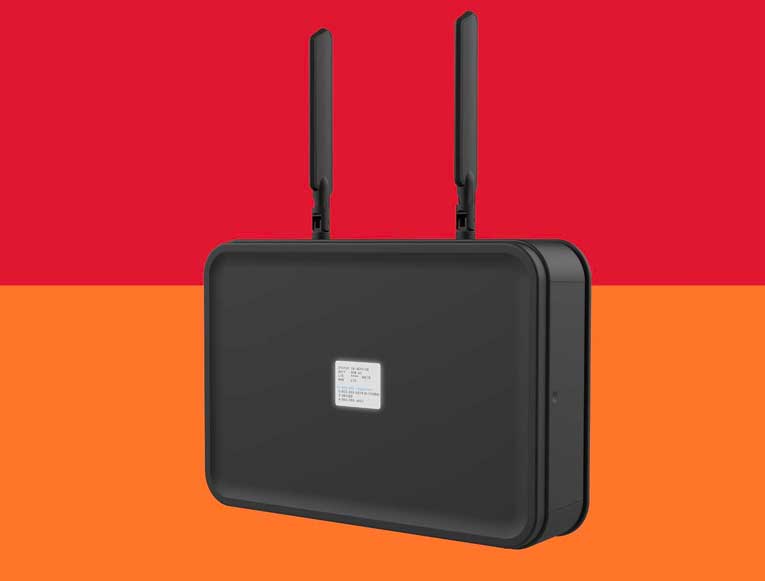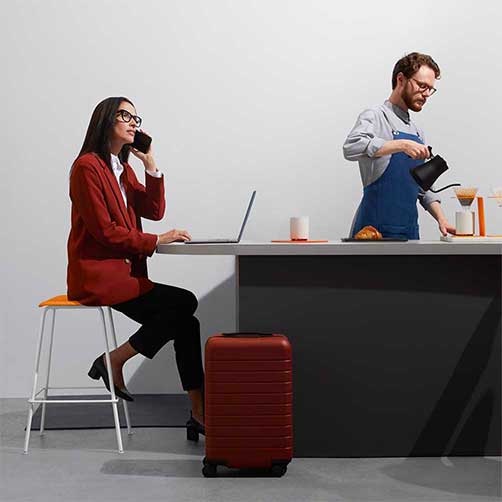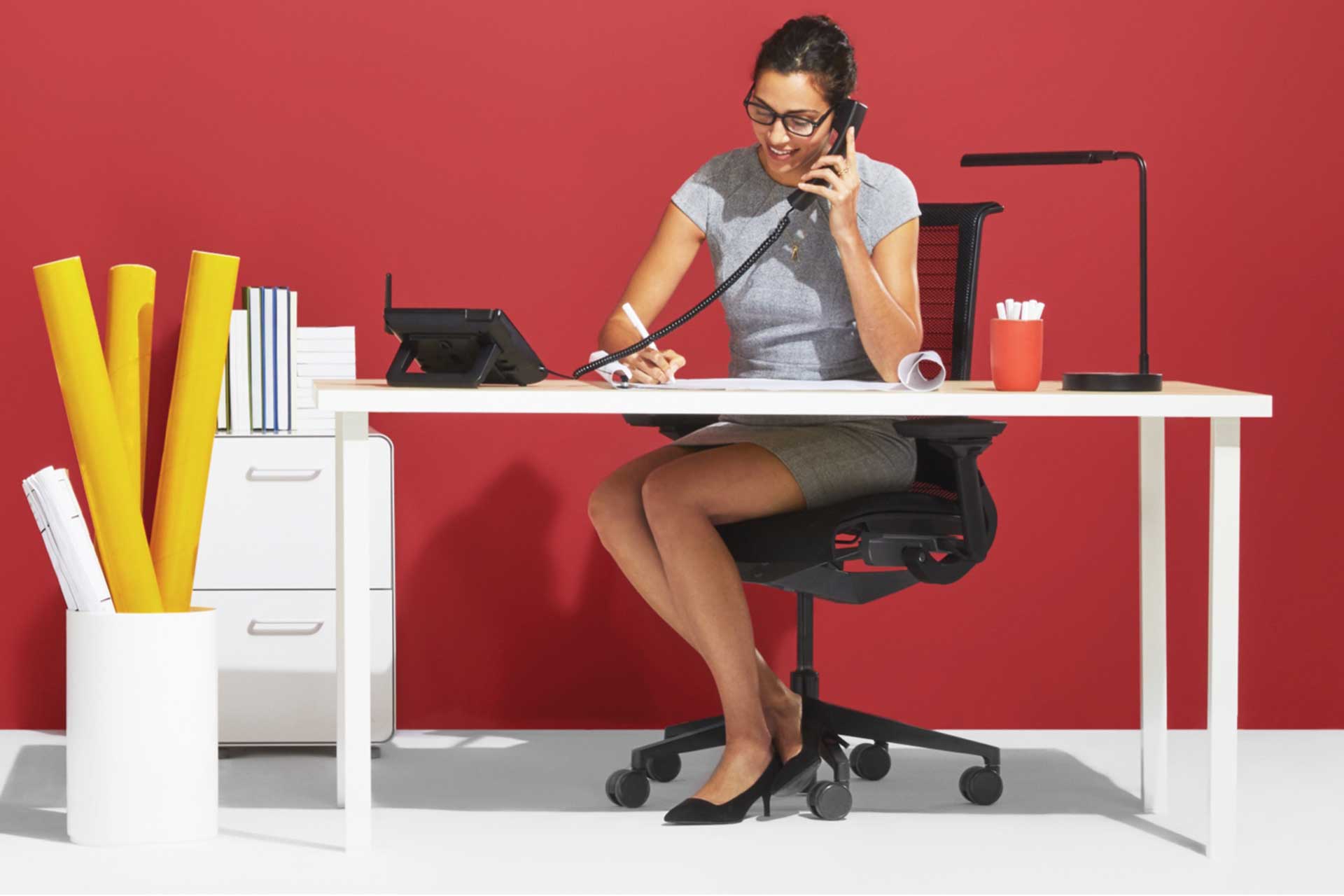Stuck in an elevator? Here’s what you need to know
Key Points
- People’s anxiety about being trapped in an elevator is real, yet most will live a lifetime without getting stuck.
- Nationwide laws governing elevator maintenance are set by OSHA and involve annual inspections at minimum.
- Stuck elevator situations can usually be remedied rapidly thanks to elevator phones that passengers use to summon help.

In the classic rom-com “You’ve Got Mail,” Tom Hanks gets stuck in an elevator with his then-girlfriend, whose response to being trapped is so narcissistic he realizes it’s time to end the relationship. Sometimes we need a dramatic reality check to open our eyes. And when one of the other elevator passengers momentarily panics, Tom does the sensible thing: Picks up the elevator phone and calls for help. However, all four passengers then decide to jump to restart the elevator—a definite no-no!
While vivid film scenes such as this can make elevators seem much more dangerous than they actually are, people can be apprehensive about elevators for a variety of reasons. For instance, one of our colleagues was about to give birth to her first child, and a new hospital orderly was terrified to get in the elevator and escort her to the maternity ward because she looked like she was going to deliver any moment. Fortunately, the orderly’s supervisor convinced her to do her job—though she froze when the mother-to-be asked if they could wait until the current contraction ended.
Fear of elevators: truth vs. drama
People’s anxiety about being trapped in an elevator is real. Yet it’s very rare that an elevator malfunctions, compared with how frequently we use them. According to the National Elevator Industry, Inc., NEII, there are more than one million elevators in the United States, one for every 317 riders, and Americans take 20.6 billion passenger trips on elevators per year. Only about one of every 100,000 elevator rides get stuck, according to a blog post by the elevator monitory company Elevate, which means most people will never experience being trapped in an elevator in their lifetime.
Fear, of course, isn’t based on statistics. What are people most concerned about when it comes to elevators?
- Not being able to breathe. Breathing is life, and it’s completely understandable that someone in a stuck elevator might be afraid they’ll run out of air. However, elevators are not airtight. They are designed with ventilation systems, so you can relax and breathe freely while waiting for help to arrive.
- Claustrophobia. People who do just fine in a brief elevator trip may become stressed if they were confined to such a small, enclosed space for a prolonged period of time.
- Fear of heights. Going from one floor to another in an enclosed elevator may be a piece of cake. Riding an elevator with glass walls or being trapped in an elevator, however, could trigger anxiety in people who have a fear of heights.
- Fear of the dark. You may have been afraid of the dark as a small child. As an adult, not so much. But the idea of being stuck in an elevator, where the lights could suddenly go out, and any little noise seems like something more nefarious, can make some people nervous.
- Stranger danger. It’s a strange world out there, and being stuck in an elevator with people you don’t know might activate feelings of social awkwardness or fear.
- Isolation. The flip side of being trapped with others is being trapped in an elevator alone, without precise knowledge of when help will get there. Even waiting for a few minutes can feel like hours when you’re by yourself, and this can be stressful.
- Bodily needs. There are no restrooms in elevators, so if the elevator malfunction is prolonged, your need to empty your bladder could become urgent.
License to ride: elevator maintenance vs. elevator phobia
How can someone lessen their fear of elevators? Should you check the elevator license to see when it was last inspected before getting on board? Many people don’t even check the expiration dates on packaged food when they buy it (or after it’s been sitting in the fridge for several weeks), so the idea of checking an elevator’s expiration date may strike them as amusing—or absurd.
Yet whether or not you check the elevator permit, the odds are good your ride will be quite safe. Here’s why:
Elevators, like automobiles or any other machinery, require regular maintenance to perform at peak capacity. Nationwide laws governing elevator maintenance are set by OSHA (the Occupational Safety and Health Administration) and involve annual inspections at minimum. It’s up to individual states and businesses to determine maintenance schedules based on usage, which could translate into far more frequent inspections and maintenance.
For example, even though federal guidelines require detailed maintenance be done every six months, elevators in high traffic environments may need inspections and maintenance performed every one to three months to ensure optimal operation.
In addition, a business must keep inspection records for at least a year, and state inspectors must review these records before a new permit is issued. A custom inspection plan and maintenance program ensure both legal compliance and a commitment to community safety.
How to call for help if you’re stuck in an elevator
Fortunately, a stuck elevator situation can usually be remedied rapidly thanks to elevator emergency phones, which allow trapped passengers to communicate with emergency personnel in the event of a malfunction.
Elevator emergency phones are required to be accessible to individuals with disabilities by the Americans with Disabilities Act (ADA). When activated, the phone will automatically dial a pre-programmed number that connects those stuck in an elevator to building security, a monitoring service, or emergency responders.
Steps to take if you’re ever stuck in an elevator
If you find yourself in a stuck elevator someday, this is what you need to do:
- Stay calm. The most important step you can take, first and foremost, is to remain calm. Remember, there is plenty of breathable air circulating, and if you feel warm, it’s likely from nerves. Next, do the following:
- Press the emergency phone button. This will summon help. Don’t be concerned if someone doesn’t respond verbally; some elevator phones are designed to only receive calls. An older elevator may have an alarm button in lieu of an emergency phone, so if there is no emergency phone, press the alarm button instead.
- Wait for help—don’t try to be a hero. It’s vital that you do not try to get out of a stuck elevator on your own; this could be very dangerous. If you attempt to pry the doors open, you could further damage the elevator. And never jump as the trapped passengers did in “You’ve Got Mail.” Once you’ve alerted the authorities, please wait for help to arrive. Yes, you’re inconvenienced for the moment, but you’re safe.
- Stand or sit toward the back of the elevator. If you’re alone in the elevator, or if there are just a few people and you won’t be crowding one another, aim to stand or sit toward the back of the elevator. This ensures there will be plenty of room for emergency responders to open the doors from the outside.
- Enjoy the elevator music. If your elevator is playing background music (known as Musak), know that this is what it was designed for: to provide a peaceful atmosphere. Of course, this means it’s intentionally boring, but don’t worry—you’ll be out of there soon enough.
- Start planning your dinner menu. Just kidding. But now that you’ve taken action, it’s essential to relax and wait for professional assistance. Savor the unexpected downtime. You can do isometric exercises, or start a conversation with your fellow elevator mates. For some people, having a conversation that isn’t work related is a novelty. Who knows, you might make a new friend or business associate.
So enjoy your elevator rides. And remember that if an elevator malfunctions when you’re inside it, there’s no need to panic. Just call for help and wait to be rescued from that horrendous elevator music. The emergency responders know just how mind-numbing such music can be, and are happy to liberate your ears along with the rest of you.
Do you own a business with elevators?
Some business owners are feeling a bit stuck themselves because many elevator phones require traditional copper wire phone service, which is escalating in cost and quickly becoming obsolete.
Ooma AirDial® is a POTS line replacement solution to help them transition to internet phone service, which is less expensive and provides many benefits. For example, Ooma AirDial call alerts make it easier for facilities managers to respond to emergencies, because emails and text messages can be sent simultaneously to as many as five people, such as your elevator maintenance manager, property owner, receptionist, building custodian and security guard, once a call for help comes in on an elevator emergency phone.
AirDial’s MultiPath technology creates two simultaneous connections from AirDial to the Public Switched Telephone Network. If one connection fails, the other is automatically and instantly used. This means calls in progress will continue traveling along uninterrupted, which is a very good feature to have when someone is trapped in an elevator.

We’ll follow up within a business day.
We’ll help you analyze whether Ooma AirDial is a good solution for your needs.
A custom quote will be generated.






